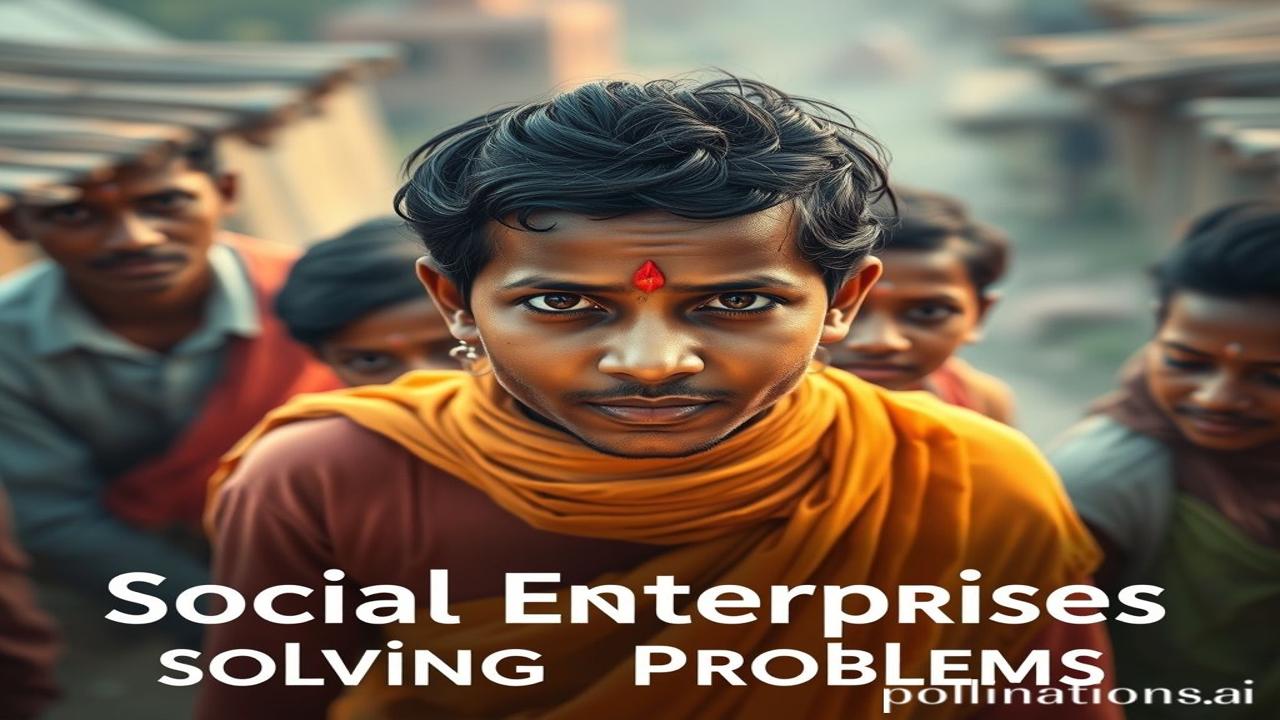Gaon Ki Mitti, Umeed Ki Kiran: Social Enterprises Solving Rural Problems
Kabhi gaon ke pagdandi par chalte hue, un mitti ki khushboo mehsus ki hai? Aisi khushboo, jo ek zamaane ki kahaniyan apne andar samete hue hai. Kahaniyan mehnat ki, umeed ki, aur kuch kar dikhane ki. Waqt ki dhool mein dabi aisi hi kuch kahaniyon ko aaj hum jeevit karenge. Today we’ll explore the incredible impact of social enterprises on rural India.
Social Enterprises: Kya Hai Yeh ‘Social Revolution’?
Social enterprises are basically businesses that are driven by a social purpose. They’re not just about making profits; they’re about solving problems. In the context of rural India, these enterprises are tackling challenges like poverty, lack of access to healthcare, education, clean water, and sustainable livelihoods.
This concept isn’t entirely new. Even historically, many community-led initiatives existed. Think of ancient village councils (Panchayats) organizing collective farming or building irrigation systems. But the modern “social enterprise” model, as we understand it today, gained traction in the late 20th century, especially as awareness of global inequalities and environmental issues grew.
Why is it important? Because traditional development approaches often fall short. Government schemes can be bureaucratic, and large corporations may not always prioritize the needs of local communities. Social enterprises, on the other hand, are designed to be sustainable, community-focused, and impactful. They’re like chote-chote diye, jo andhere mein bhi roshni phailaate hain.
Zameeni Sach: People and their Jeevan
Imagine a young farmer, Ramu, in a village in Maharashtra. For generations, his family has struggled with unpredictable rainfall and poor soil. He’s burdened by debt and feels trapped. Then, a social enterprise arrives, introducing him to innovative farming techniques like drip irrigation and organic fertilizers. They also connect him directly to markets, cutting out middlemen and increasing his income.
“Pehle toh darr lagta tha,” Ramu might say. “Naya tareeka, naya system… Lekin ab, main apne bacchon ko achhi shiksha de sakta hoon. Mera parivar khush hai.”
Or consider Lakshmi, a woman from a small village in Rajasthan. Lack of access to healthcare meant regular illnesses and high medical expenses for her family. A social enterprise sets up a mobile health clinic in her village, providing affordable check-ups and essential medicines. Lakshmi now feels empowered to take care of her family’s health.
These are just glimpses into the lives touched by social enterprises. They’re not just creating jobs; they’re building resilience, fostering entrepreneurship, and empowering communities.
Dharohar Aur Pehchaan: Rooted in Bharatiyata
The spirit of seva (service) and daan (charity) has always been deeply ingrained in Bharatiyata. Social enterprises embody this same spirit, but with a more sustainable and empowering approach. They are not just giving handouts; they are providing tools and opportunities for people to help themselves.
Today, we see echoes of this in the growing emphasis on sustainable development goals (SDGs) and corporate social responsibility (CSR). Many organizations are now actively seeking ways to contribute to rural development through social entrepreneurship. The idea of Vasudhaiva Kutumbakam – the world is one family – resonates strongly in the mission of these enterprises.
Mazedar Tathya Ya Bhram-Bhanjak: Myth-Busting Time!
Myth: Social enterprises are just charities in disguise.
Asli Sach: Social enterprises operate like businesses. They generate revenue, reinvest profits, and strive for financial sustainability. While their primary goal is social impact, they need to be profitable to survive and scale. They are far more sustainable than simple charity.
Shocking Truth: Many successful social enterprises are led by women entrepreneurs from rural backgrounds. These women are breaking barriers, challenging stereotypes, and proving that they can be powerful agents of change.
Drishya Aur Bhavnaएं: The Sensory Experience
Imagine walking through a village where a social enterprise has transformed the landscape. The air smells of freshly harvested organic crops. The sounds of children laughing as they attend a newly established school fill the air. You see women skillfully crafting handmade products, their faces glowing with confidence and pride. The walls of the houses are painted with vibrant colours, reflecting the renewed hope and prosperity in the community.
The feeling is palpable: a sense of empowerment, resilience, and the unwavering spirit of India.
Antim Vichar Ya Uddharan: Closing Thoughts
Social enterprises are not a magic bullet, but they offer a powerful and sustainable solution to many of the challenges facing rural India. They are a testament to the ingenuity, compassion, and entrepreneurial spirit of the Indian people.
As the Upanishads say: “Sarve bhavantu sukhinah, sarve santu niramayah” – May all be happy, may all be free from illness. Social enterprises, in their own way, are striving to make this ancient aspiration a reality for millions of people across rural India. They are planting seeds of hope, one village at a time. They are the kirans of change, illuminating the path towards a brighter future.
